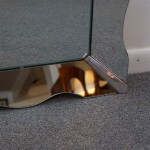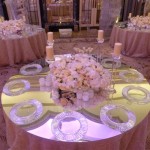How To Fix Vanity Mirror Lights
Vanity mirrors with integrated lighting are a common feature in bathrooms and dressing areas, providing focused illumination for grooming and makeup application. When the lights on these mirrors malfunction, it can significantly reduce their functionality and aesthetic appeal. This article provides a comprehensive guide to diagnosing and repairing common issues encountered with vanity mirror lights.
Identifying the Problem
The first step in fixing vanity mirror lights is accurately identifying the problem. This involves a systematic approach to determine the source of the malfunction. Several potential issues can cause vanity mirror lights to fail, ranging from simple solutions like a blown bulb to more complex problems involving wiring or electrical components.
Begin by visually inspecting the lights. Are all the lights out, or just some? If only some lights are not working, it suggests a problem with individual bulbs or their respective sockets. If all the lights are out, the issue is likely related to the power source, wiring, or a central control component. Note the type of bulbs used in the mirror, as this information is crucial for replacement.
Check the power switch. Ensure it is in the "on" position. If the mirror has a dimmer switch, verify that it is not set to the lowest setting, as this can sometimes appear as if the lights are not working. Try toggling the switch several times. Sometimes, a faulty switch can cause intermittent connection issues that might be temporarily resolved by repeated activation.
Inspect the power cord and plug. Look for any visible signs of damage, such as frayed wires, cuts, or exposed conductors. If damage is apparent, the power cord may need replacement. Ensure the plug is securely inserted into the electrical outlet. Try plugging the mirror into a different outlet to rule out a faulty outlet as the cause of the problem.
If the mirror has a built-in fuse, locate it and visually inspect it. A blown fuse will have a broken filament. Replacing a blown fuse is a relatively simple repair, but it is essential to use a fuse with the same amperage rating as the original. Using a fuse with a higher amperage rating can be dangerous and may cause damage to the mirror or the electrical circuit.
For mirrors with LED lights, identifying the specific problem can be more challenging. Individual LEDs rarely fail, but if a section or the entire LED strip is not working, the issue might be with the LED driver, the wiring connecting the LEDs, or the LED strip itself. Testing these components requires specialized tools and knowledge.
Replacing Bulbs and Sockets
If the problem is limited to individual bulbs not working, replacing them is the most straightforward solution. Before replacing any bulbs, disconnect the mirror from the power outlet to prevent electrical shock.
Ensure the replacement bulbs are the correct type and wattage. Using bulbs with the wrong wattage can overload the circuit, damage the mirror, or create a fire hazard. Refer to the manufacturer's specifications for the correct bulb type and wattage. This information is often found on a label on the mirror itself or in the owner's manual.
To remove the old bulb, gently twist it counterclockwise (for screw-in bulbs) or pull it straight out (for bayonet-style bulbs). If the bulb is difficult to remove, try using a rubber glove to improve grip. Be careful not to break the bulb during removal. If the bulb shatters, use pliers to carefully remove the base from the socket.
Before inserting the new bulb, inspect the socket for any signs of corrosion or damage. If the socket is corroded, clean it with a small wire brush or contact cleaner. Loose or damaged sockets may need replacement. Replacing a socket typically involves disconnecting the wires connected to the old socket and connecting them to the new socket. Ensure the wires are securely connected and that the connections are properly insulated.
When installing the new bulb, gently twist it clockwise (for screw-in bulbs) or push it in and twist (for bayonet-style bulbs). Ensure the bulb is securely seated in the socket.
After replacing the bulb, reconnect the mirror to the power outlet and test the light. If the new bulb still does not work, the problem may lie elsewhere, such as a faulty switch or wiring issue.
Troubleshooting Wiring and Electrical Components
If replacing bulbs and fuses does not resolve the problem, the issue may involve more complex wiring or electrical components. This type of repair typically requires some electrical knowledge and experience. If uncomfortable working with electrical wiring, it is recommended to consult a qualified electrician.
Before working on any wiring, disconnect the mirror from the power outlet and verify that there is no voltage present using a multimeter. A multimeter is an essential tool for diagnosing electrical problems. It can be used to check for voltage, continuity, and resistance in electrical circuits.
Inspect the wiring inside the mirror for any signs of damage, such as frayed wires, loose connections, or burnt insulation. Pay close attention to the connections at the switch, the bulb sockets, and the power cord. Loose connections can cause intermittent problems or complete failure of the lights. Tighten any loose connections and replace any damaged wiring.
The switch is a common point of failure in vanity mirror lights. To test the switch, disconnect the wires connected to it and use a multimeter to check for continuity. When the switch is in the "on" position, there should be continuity between the terminals. When the switch is in the "off" position, there should be no continuity. If the switch does not function as expected, it needs replacement.
If the mirror has a dimmer switch, it may be the source of the problem. Dimmer switches can fail over time, causing the lights to flicker or not work at all. Replacing a dimmer switch is similar to replacing a regular switch. Ensure the replacement dimmer switch is compatible with the type of bulbs used in the mirror.
For mirrors with LED lighting, the LED driver is a critical component. The LED driver converts the AC voltage from the power outlet to the DC voltage required by the LEDs. If the LED driver fails, the LEDs will not light up. Testing an LED driver requires specialized knowledge and equipment. Typically, a malfunctioning LED driver needs replacement, often as a complete unit.
If wiring repairs are necessary, ensure all connections are properly insulated using electrical tape or wire connectors. Improperly insulated connections can create a shock hazard or cause short circuits.
After completing any wiring repairs, carefully reassemble the mirror and reconnect it to the power outlet. Test the lights to ensure they are working properly.
When dealing with electrical components, safety precautions are paramount. Always disconnect the power before working on any wiring. Use insulated tools to prevent electrical shock. If unsure about any aspect of the repair, consult a qualified electrician.

Replacing A Light Fixture On Vanity Mirror

Replacing A Light Fixture On Vanity Mirror

Vanity Mirror Light Bulb Replacement How To Replace On A Sunter Lighted

How To Repair My Led Vanity Makeup Mirror Light

Vanity Mirror Light Bulb Replacement How To Replace On A Sunter Lighted

Vehicle Vanity Light And Mirror Change Same For Many Vehicles

How To Install A Bathroom Vanity Light For Quick Update Hunter Fan

How To Replace A Hollywood Light With 2 Vanity Lights

How To Replace A Hollywood Light With 2 Vanity Lights

Wooden Light Fixture Over Bathroom Mirrors Gray House Studio








